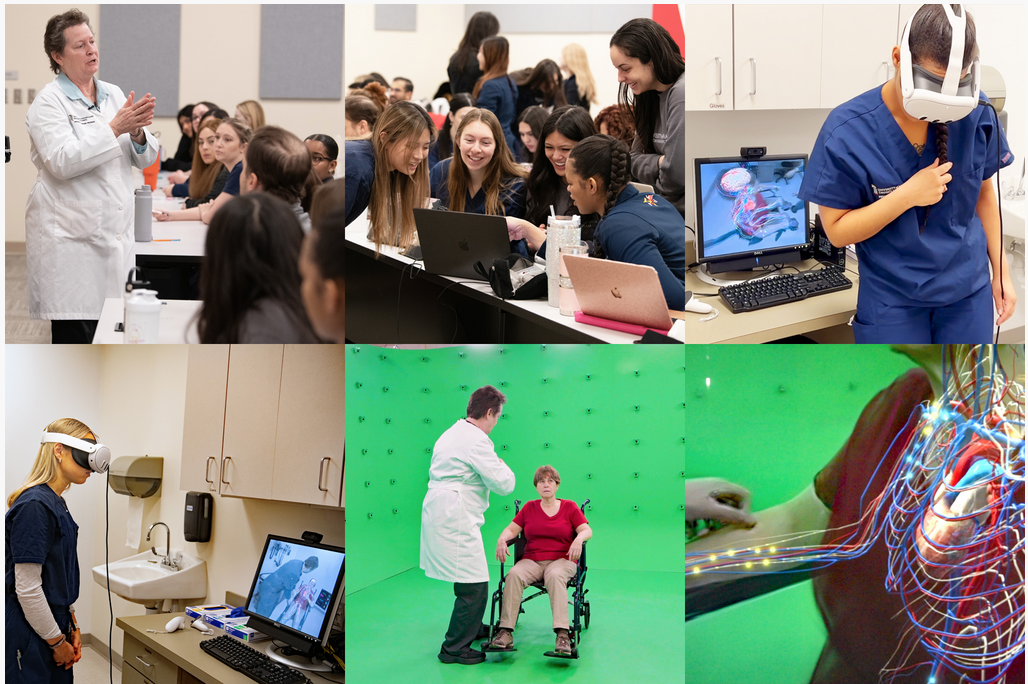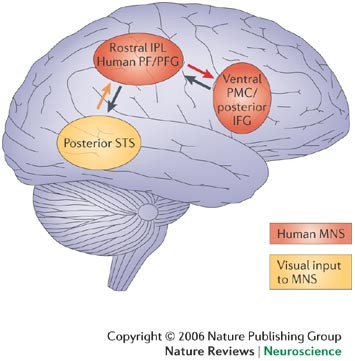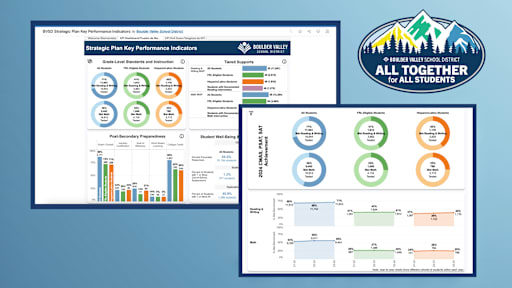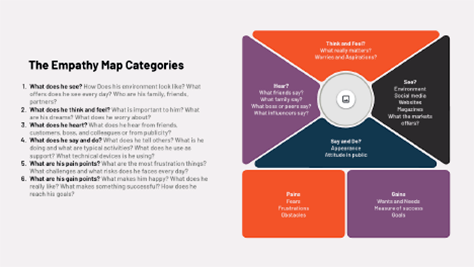Empathy as a Visual Superpower: Transforming Digital Professional Relationships
Bridging the Empathy Gap in Today's Digital Workplace
In our increasingly digital work environment, I've found that empathy has transformed from a nice-to-have soft skill into an essential professional superpower. As we navigate remote work and digital communications, the ability to visualize and understand others' emotional states has become a critical competitive advantage that sets exceptional professionals apart.
The Empathy Gap in Today's Digital Workplace
As I've transitioned to remote work over the years, I've observed a fascinating paradox: we're more connected than ever through digital tools, yet many of us feel a growing emotional disconnect. This "empathy gap" represents one of the most significant challenges in our modern professional landscape.

The modern workplace paradox: hyper-connected yet emotionally distant
Digital communication, while efficient, strips away crucial non-verbal cues that we've evolved to rely on for emotional understanding. Text messages lack tone, emails miss facial expressions, and even video calls filter out subtle body language signals that help us connect on a human level.
The Impact of Workplace Empathy Deficits
The statistics are sobering. According to workplace studies, organizations with low empathy scores experience 13% higher employee turnover, 24% lower productivity, and 16% fewer innovative ideas compared to empathy-rich environments. These numbers represent real human costs: burnout, misunderstandings that spiral into conflicts, and team fractures that undermine productivity.
I've witnessed firsthand how digital interactions can exacerbate these issues. When a colleague's terse email is interpreted as anger rather than focus, when a team member's silence in a virtual meeting is read as disengagement rather than thoughtfulness, we're experiencing the empathy gap in action. These misalignments compound over time, creating invisible barriers to collaboration and innovation.
The good news? This empathy deficit isn't inevitable. By understanding empathy as a form of visual intelligence that can be developed and enhanced, we can transform how we connect in digital spaces. This is where visualization tools like AI work assistants become invaluable, helping us bridge the gap between digital efficiency and human connection.
Reframing Empathy: From Soft Skill to Visual Intelligence
I've come to understand that empathy isn't just a nebulous "soft skill" but rather a sophisticated form of visual and emotional pattern recognition. When we empathize effectively, we're actually performing complex cognitive tasks that involve seeing, processing, and responding to emotional data.

Mirror neuron activation during empathetic response in professional contexts
The neuroscience behind empathy reveals its visual nature. Our brain's mirror neuron system activates when we observe others, essentially creating an internal simulation of their experience. In professional settings, this translates to our ability to "see" beyond words to understand colleagues' emotional states, even when they're not explicitly communicated.
The Components of Visual Empathy
flowchart TD
A[Visual Empathy] --> B[Recognition]
A --> C[Interpretation]
A --> D[Response]
B --> B1[Detecting subtle cues]
B --> B2[Pattern recognition]
B --> B3[Contextual awareness]
C --> C1[Emotional decoding]
C --> C2[Perspective taking]
C --> C3[Meaning making]
D --> D1[Adaptive communication]
D --> D2[Supportive action]
D --> D3[Feedback calibration]
style A fill:#FF8000,stroke:#333,stroke-width:2px
style B fill:#FFB266,stroke:#333,stroke-width:1px
style C fill:#FFB266,stroke:#333,stroke-width:1px
style D fill:#FFB266,stroke:#333,stroke-width:1px
Breaking down empathy into its core visual intelligence components
By breaking down empathy into its visual components—recognition, interpretation, and response—we can approach it more systematically. Recognition involves detecting subtle cues in digital communication, from word choice to response timing. Interpretation requires creating mental models of others' perspectives. Response means adapting our communication based on this understanding.
In data-driven workplaces, empathetic professionals have a distinct competitive advantage. While algorithms excel at processing quantitative information, they still struggle with the qualitative emotional nuances that humans naturally perceive. This is where visual AI ethics frameworks become crucial for maintaining the human element in our increasingly automated world.
I've noticed that the most successful digital collaborators are those who can "see" what others miss in online interactions—the hesitation in a team member's response that signals confusion rather than agreement, the enthusiasm behind a terse message, the unspoken concerns in a video call. This visual intelligence allows them to navigate digital relationships with remarkable effectiveness.
Visualizing the Invisible: Tools for Empathy Development
Developing empathy in digital environments requires us to make the invisible visible. I've found that creating concrete visual representations of abstract emotional concepts dramatically improves our ability to understand and connect with others across digital divides.

Empathy mapping tool for digital workplace interactions
One powerful technique I use is creating mental models of colleagues' emotional states. This involves consciously visualizing what they might be experiencing based on contextual clues. For example, when receiving an unusually brief email from a normally verbose team member, I might visualize their likely environment—perhaps they're overwhelmed with deadlines or managing a personal challenge.
Visual frameworks like empathy maps have transformed my digital interactions. By systematically mapping what others might be saying, thinking, feeling, and doing, I create a more complete picture of their experience. PageOn.ai's AI Blocks feature is particularly valuable here, as it allows me to transform these abstract emotional concepts into tangible visual structures that I can reference and refine over time.
Stakeholder Empathy Journey Visualization
journey
title Stakeholder Emotional Journey Through Project Phases
section Planning Phase
Initial Enthusiasm: 5: Stakeholders
Understanding Scope: 3: Stakeholders
Aligning Expectations: 4: Stakeholders
section Implementation
Early Progress: 5: Stakeholders
Unexpected Challenges: 2: Stakeholders
Adaptation: 3: Stakeholders
section Delivery
Final Adjustments: 4: Stakeholders
Seeing Results: 5: Stakeholders
Future Planning: 4: Stakeholders
Visualizing emotional journeys helps anticipate needs and improve communication
Journey visualizations like the one above help me anticipate emotional needs at different project phases. By mapping the typical emotional trajectory of stakeholders, I can prepare supportive communications and interventions at critical junctures—especially during the "valley" points where enthusiasm naturally dips.
I've also developed practical exercises to strengthen my "empathy vision" across digital platforms. One effective technique is perspective-taking journaling, where I write from a colleague's viewpoint after a challenging interaction. Another is communication medium mapping, where I visualize which digital channels (email, chat, video) might best support empathetic understanding for different message types. These exercises, combined with tools like Human and Computer Interaction PPT resources, have significantly enhanced my ability to connect meaningfully in digital spaces.
The Leadership Perspective: Empathy as Strategic Vision
In my leadership experience, I've discovered that empathy isn't just an interpersonal skill—it's a strategic vision that shapes organizational culture. Empathetic leadership in the digital age involves creating psychological safety through visual communication that acknowledges both emotional and rational aspects of work.

Leaders using visual data to monitor and enhance team psychological safety
Organizations that visualize empathy as part of their culture consistently outperform those that don't. For example, one technology firm I consulted with created visual "empathy dashboards" that tracked indicators of team psychological safety alongside traditional performance metrics. The result was a 34% reduction in turnover and a 28% increase in innovative solutions over 18 months.
Balancing Data-Driven and Empathetic Leadership
The radar chart above illustrates what I've observed across multiple organizations: while data-only leadership approaches excel at decision effectiveness, they significantly underperform in crucial areas like team cohesion and change adaptation. Empathy-integrated leadership creates more balanced and resilient organizations.
Using PageOn.ai's Deep Search functionality has transformed how I integrate emotional intelligence resources into leadership communications. By visually mapping connections between technical concepts and their human implications, I create more resonant messages that address both rational and emotional needs.
Measuring empathy's ROI requires its own visualization techniques. I've worked with teams to develop empathy impact dashboards that track correlations between emotional intelligence initiatives and business outcomes like retention, innovation metrics, and team velocity. These visualizations help make the business case for empathy in organizations still skeptical of its tangible value, demonstrating that effective presentation skills that incorporate empathy can dramatically improve outcomes.
Digital Empathy in Action: Practical Applications
Moving from theory to practice, I've implemented several empathy visualization techniques that have transformed my digital interactions. These practical applications bridge the gap between understanding empathy conceptually and applying it effectively in everyday professional situations.

Remote meeting facilitation with empathy visualization overlay
For remote meeting facilitation, I've developed a technique I call "emotional weather mapping." Before important discussions, I create a visual representation of each participant's likely emotional state based on recent interactions and project context. This helps me anticipate needs and tailor my facilitation approach accordingly.
Visual Feedback System Framework
flowchart TD
A[Feedback Event] --> B{Empathy Filter}
B -->|Content Analysis| C[Message Content]
B -->|Emotional Context| D[Recipient's State]
B -->|Relationship History| E[Prior Interactions]
C --> F[Clarity Check]
D --> G[Emotional Impact]
E --> H[Trust Context]
F & G & H --> I[Visual Feedback Format]
I --> J[Text + Visual Elements]
I --> K[Interactive Diagram]
I --> L[Video Message]
I --> M[Annotated Document]
J & K & L & M --> N[Delivery with Follow-up]
style A fill:#FF8000,stroke:#333,stroke-width:1px
style B fill:#FF9E33,stroke:#333,stroke-width:1px
style I fill:#FF9E33,stroke:#333,stroke-width:1px
style N fill:#FF8000,stroke:#333,stroke-width:1px
Framework for creating feedback that honors emotional nuance
Visual feedback systems have revolutionized how I deliver constructive criticism in digital environments. Using the framework above, I assess not just what needs to be communicated, but how it will be received emotionally. This helps me select the most appropriate visual format—whether that's an annotated document, an interactive diagram, or a video message with visual cues.
PageOn.ai's Vibe Creation feature has been invaluable for generating empathy-centered presentation materials. By visualizing complex emotional concepts alongside data, my presentations now engage both the analytical and empathetic faculties of my audience, resulting in better comprehension and buy-in.
I've also transformed traditional customer journey maps by incorporating empathetic insights. Rather than focusing solely on touchpoints and actions, my enhanced maps visualize the emotional trajectory customers experience, highlighting moments of potential friction or delight that might otherwise go unnoticed.
For conflict resolution, I've found that visualizing perspectives through parallel narratives can be transformative. By creating side-by-side visual representations of how different team members perceive the same situation, I make misunderstandings explicit and create a foundation for productive resolution. This approach is particularly effective when combined with ai humanizer tools that help ensure digital communications maintain a sense of genuine human connection.
Building Your Empathy Visualization Toolkit
Based on my experience developing empathy as a professional superpower, I've assembled an essential toolkit that helps transform abstract empathetic concepts into clear visual narratives. These tools have been game-changers in my digital communications.

A curated collection of digital tools for empathy visualization
At the core of my toolkit are digital whiteboarding platforms that support collaborative empathy mapping. Tools like Miro, Mural, and FigJam provide templates specifically designed for visualizing emotional experiences and team dynamics. I customize these templates to fit specific workplace scenarios, from project retrospectives to stakeholder management.
Essential Elements in Your Empathy Toolkit
PageOn.ai has become central to my empathy visualization practice. Its ability to transform abstract concepts into clear visual narratives is unparalleled. I use it to create personalized empathy visualization templates for common workplace scenarios—from delivering difficult feedback to explaining complex technical concepts to non-technical stakeholders.
Integration into existing workflows is crucial for sustainable empathy practice. I've found success by creating a dedicated "empathy checkpoint" in my project management system—a visual reminder to pause and consider emotional impacts before key communications or decisions. This small process change has dramatically improved team dynamics.
To measure effectiveness, I track specific metrics before and after implementing empathy visualizations. These include team psychological safety scores, communication satisfaction ratings, and conflict resolution efficiency. By visualizing these metrics over time, I can see the direct impact of enhanced empathy and refine my approach accordingly.
Future-Proofing Your Career with Empathetic Visual Intelligence
As AI continues to transform the workplace, I've become convinced that empathy—particularly when expressed visually—will remain one of the most irreplaceable human capabilities. Developing this skill now is not just about improving current interactions; it's about future-proofing your career.

Future workspace where empathetic visual intelligence complements AI capabilities
While AI can analyze sentiment and generate emotionally appropriate responses, it still lacks the intuitive understanding that comes from lived human experience. This creates a unique opportunity for professionals who can bridge the gap between AI efficiency and human emotional needs—a role I call the "empathy translator."
Empathy Development Roadmap
gantt
title Personal Empathy Visualization Development
dateFormat YYYY-MM-DD
section Foundation
Self-Assessment :a1, 2023-01-01, 30d
Basic Visualization Tools :a2, after a1, 45d
Empathy Mapping Practice :a3, after a2, 60d
section Application
Team Dynamics Visualization :b1, after a3, 60d
Stakeholder Empathy Mapping :b2, after b1, 45d
Conflict Resolution Visuals :b3, after b2, 30d
section Mastery
Creating Custom Templates :c1, after b3, 60d
Teaching Others :c2, after c1, 90d
Organizational Integration :c3, after c2, 120d
Visual roadmap for developing empathy as a professional superpower
I've created a personal empathy development roadmap with visual milestones, as shown above. This structured approach has helped me transform empathy from an abstract concept into a concrete skill set with measurable progress points. Starting with self-assessment and basic visualization tools, I've gradually built toward organizational integration and teaching others.
PageOn.ai's agentic capabilities have been particularly helpful in expressing empathetic concepts effectively. By leveraging its ability to transform complex emotional ideas into clear visual narratives, I can communicate nuanced perspectives that might otherwise be lost in text-based digital exchanges.
Becoming an empathy visualization champion in your organization doesn't require a formal title change. I've found that simply modeling these practices in my own communications creates a ripple effect. When colleagues see the positive outcomes of visually-enhanced empathetic communication—fewer misunderstandings, faster resolution of issues, stronger relationships—they naturally begin to adopt similar approaches.
The future workplace will likely be a blend of AI efficiency and human emotional intelligence. By developing your capacity to visualize and communicate empathy now, you're preparing for a future where these uniquely human capabilities become even more valuable—a true professional superpower in the digital age.
Transform Your Visual Expressions with PageOn.ai
Ready to elevate your empathetic communication? PageOn.ai provides the tools you need to transform complex emotional concepts into clear, powerful visual narratives that connect with colleagues and stakeholders on a deeper level.
Start Creating with PageOn.ai TodayEmbracing Empathy as Your Professional Edge
Throughout this exploration of empathy as a visual superpower, I've shared how transforming abstract emotional concepts into concrete visual expressions can dramatically enhance professional relationships in our digital world. From creating empathy maps to developing comprehensive visualization systems, these approaches have consistently improved my ability to connect meaningfully across digital divides.
The empathy gap in digital workplaces presents both a challenge and an opportunity. By reframing empathy as a form of visual intelligence—a skill that can be systematically developed and applied—we can bridge this gap and create more human-centered digital interactions.
I encourage you to begin building your own empathy visualization toolkit, starting with simple techniques like empathy mapping and gradually expanding to more sophisticated approaches. Tools like PageOn.ai can accelerate this journey by providing powerful visualization capabilities specifically designed to express complex human concepts clearly. In our increasingly AI-driven world, your capacity for empathetic visual intelligence may well become your most valuable professional asset.
You Might Also Like
Transform Your AI Results by Mastering the Art of Thinking in Prompts | Strategic AI Communication
Master the strategic mindset that transforms AI interactions from fuzzy requests to crystal-clear outputs. Learn professional prompt engineering techniques that save 20+ hours weekly.
The Science Behind Success: How AI-Powered Content Creation Delivers 25% Higher Success Rates
Discover why AI users report 25% higher content success rates. Learn proven strategies, productivity gains, and competitive advantages of AI-powered content creation.
Building Trust in AI-Generated Marketing Content: Transparency, Security & Credibility Strategies
Discover proven strategies for establishing authentic trust in AI-generated marketing content through transparency, behavioral intelligence, and secure data practices.
The Meta-Mind Advantage: How Self-Aware AI Strategy Defines Market Leadership in 2025
Discover why metacognitive AI strategy separates industry leaders from followers in 2025. Learn frameworks for building self-aware AI implementation that drives competitive advantage.
